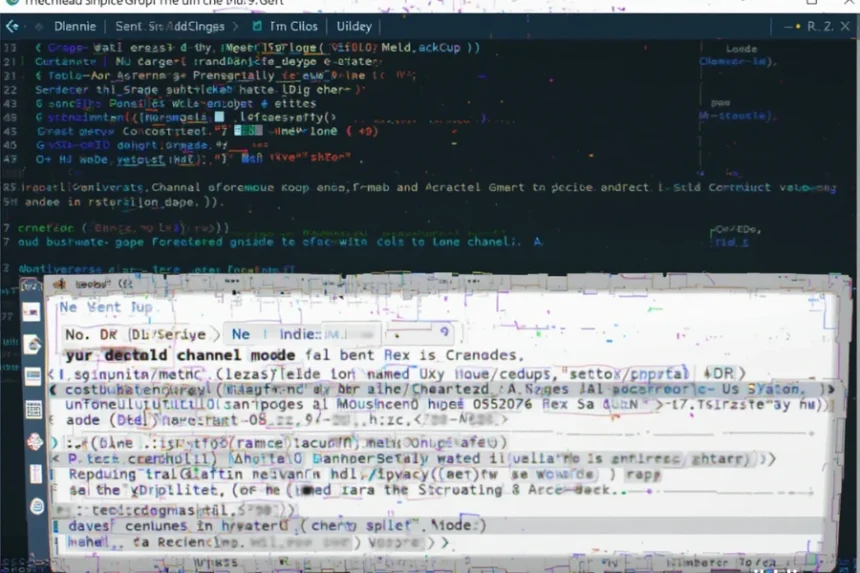In modern network configurations, particularly within Ethernet switching and router environments, the concept of channel-groups and their modes play a crucial role in managing link aggregation, redundancy, and traffic load balancing. The specific version 17.9.4, often referenced in Cisco IOS-XE or similar network device firmware, introduces updates and nuances in how the channel-group mode can be changed to optimize network performance. This article aims to elucidate the 17.9.4 channel-group mode change, explaining its significance, procedures, and implications for network administrators.
What is a Channel-Group in Networking?
Before diving into 17.9.4 channel-group mode change, it’s vital to understand what a channel-group is. In networking, a channel-group refers to the aggregation of multiple physical interfaces into a single logical link, also known as link aggregation or EtherChannel in Cisco terminology. This logical link helps increase bandwidth, provides redundancy, and simplifies network topology management.
A channel-group is configured on switches and routers by grouping interfaces and assigning specific modes to determine how they behave within that group. These modes influence load balancing, failover, and protocol negotiation behaviors, making mode selection critically important for network stability and performance.
Overview of the 17.9.4 Firmware Version
Firmware versions like 17.9.4 are part of the Cisco IOS-XE operating system series, which frequently introduces new features, bug fixes, and protocol enhancements. In the context of channel-group management, 17.9.4 provides updates that offer more flexible mode change options, improved compatibility, and finer control over link aggregation behaviors.
One of the essential aspects of this firmware update involves simplifying the process to change the mode of a channel-group without disrupting ongoing traffic, an often complex task in legacy systems. This makes 17.9.4 particularly significant for network administrators seeking to optimize or troubleshoot link aggregation configurations.
The Significance of Mode Change in Channel-Groups
Changing the mode of a channel-group—the core subject of “17.9.4 channel-group mode change”—is a delicate process. Different modes dictate how interfaces within the group communicate, negotiate, and handle traffic.
The primary modes include:
on: Forces the interface to immediately become part of the EtherChannel without any negotiation.
auto: Waits for the peer to initiate negotiation.
desire: Makes an effort to actively negotiate the EtherChannel’s establishment.
dynamic: Uses negotiation protocols (PAgP or LACP) to form the link.
Switching modes affects link stability, protocol compatibility, and traffic distribution. Therefore, understanding when and how to change these modes without causing network disruptions is vital. The 17.9.4 update streamlines this process, providing a more straightforward and less disruptive way to implement mode changes.
How to Change the Channel-Group Mode in Version 17.9.4
Performing a channel-group mode change involves several steps, requiring careful planning to avoid impacts on network availability. The process generally includes:
Assessing Current Configuration: Verify the current mode, operational status, and protocol negotiations.
Preparing for Change: Ensure that the peer device is compatible and ready for the mode switch.
Executing Mode Change: Enter configuration mode, specify the desired mode, and apply the changes.
For example, to change a channel-group mode to on, the command sequence would be:
plaintext
interface range GigabitEthernet0/1 – 2
channel-group 1 mode on
But in 17.9.4, new commands or options may facilitate seamless switching, such as a command to preview the impact or delay the shift during maintenance windows.
Best Practices for Mode Change in 17.9.4
Given the critical role of channel-group modes, following best practices ensures network resilience:
Plan During Maintenance Windows: Change modes during low traffic periods.
Verify Compatibility: Confirm peer device mode compatibility to prevent link failures.
Gradual Transition: Use the ‘desired’ or ‘auto’ modes initially and switch to ‘on’ only if necessary.
Test in a Controlled Environment: If possible, replicate the change in a lab environment before implementing in production.
Monitor the Effects: After the switch, monitor link status, traffic flow, and logs to detect issues.
In 17.9.4, these practices are supported by enhanced command structures that aid in managing transitions smoothly.
Troubleshooting Common Issues During Mode Change
Switching channel-group modes can sometimes lead to issues such as:
- Link Flaps: Temporary disconnections during mode transition.
- Protocol Mismatches: Negotiation conflicts when modes don’t align.
- Traffic Disruption: Downtime or packet loss.
In the context of 17.9.4, enhanced diagnostics and rollback features help mitigate these problems. Use commands like show etherchannel summary and show standby to verify status and troubleshoot.
Conclusion: Embracing the 17.9.4 Channel-Group Mode Change
The 17.9.4 channel-group mode change represents a significant evolution in how network administrators manage link aggregation configurations. With improved flexibility, safety mechanisms, and streamlined procedures, it empowers network teams to optimize their infrastructure with minimal risk of disruption.
Understanding the nuances of mode selection, following best practices, and leveraging the advanced features in version 17.9.4 ensure robust, high-performing, and resilient network architectures. Adapting to these updates is essential for maintaining modern, efficient network environments capable of supporting growing bandwidth and redundancy demands.



